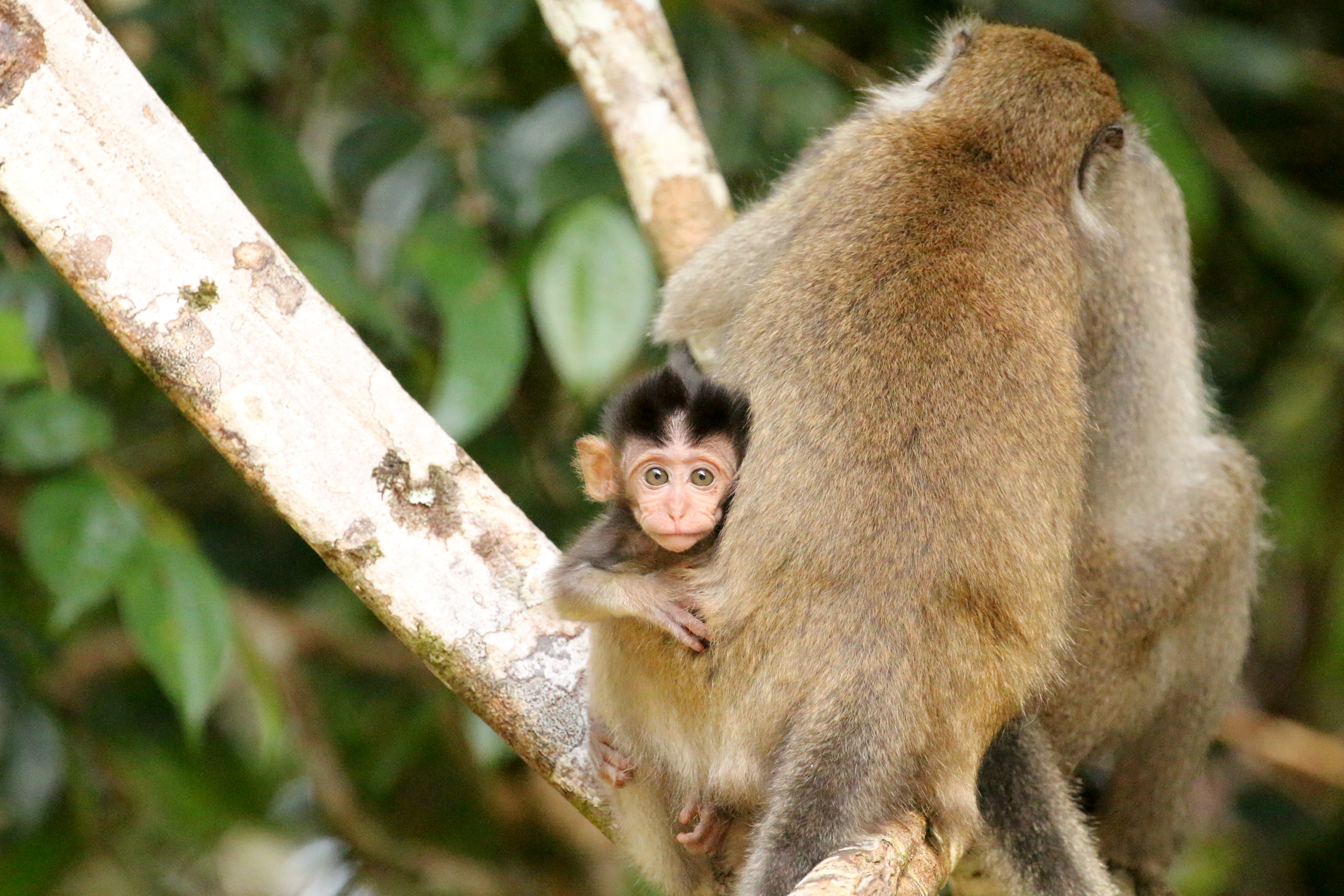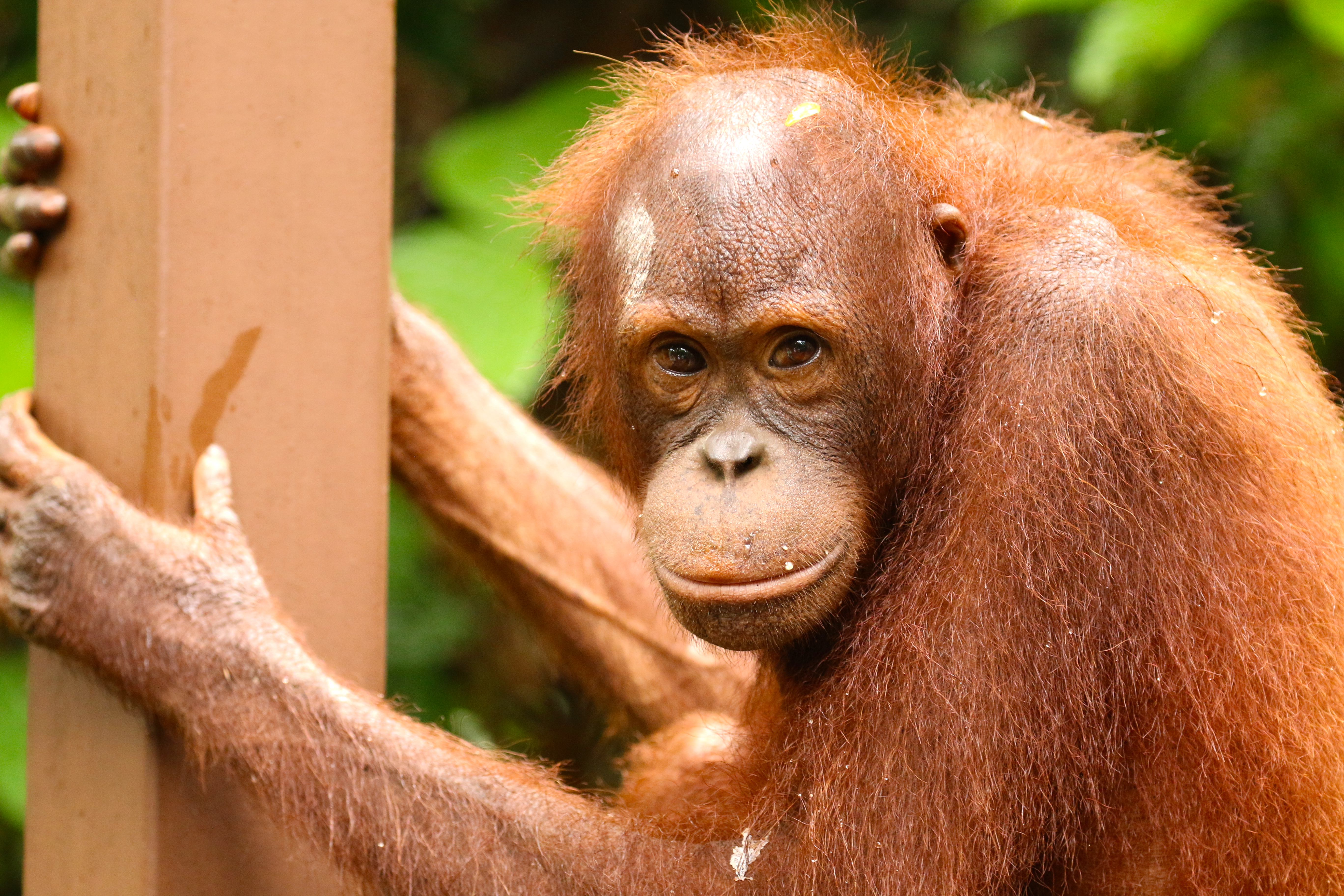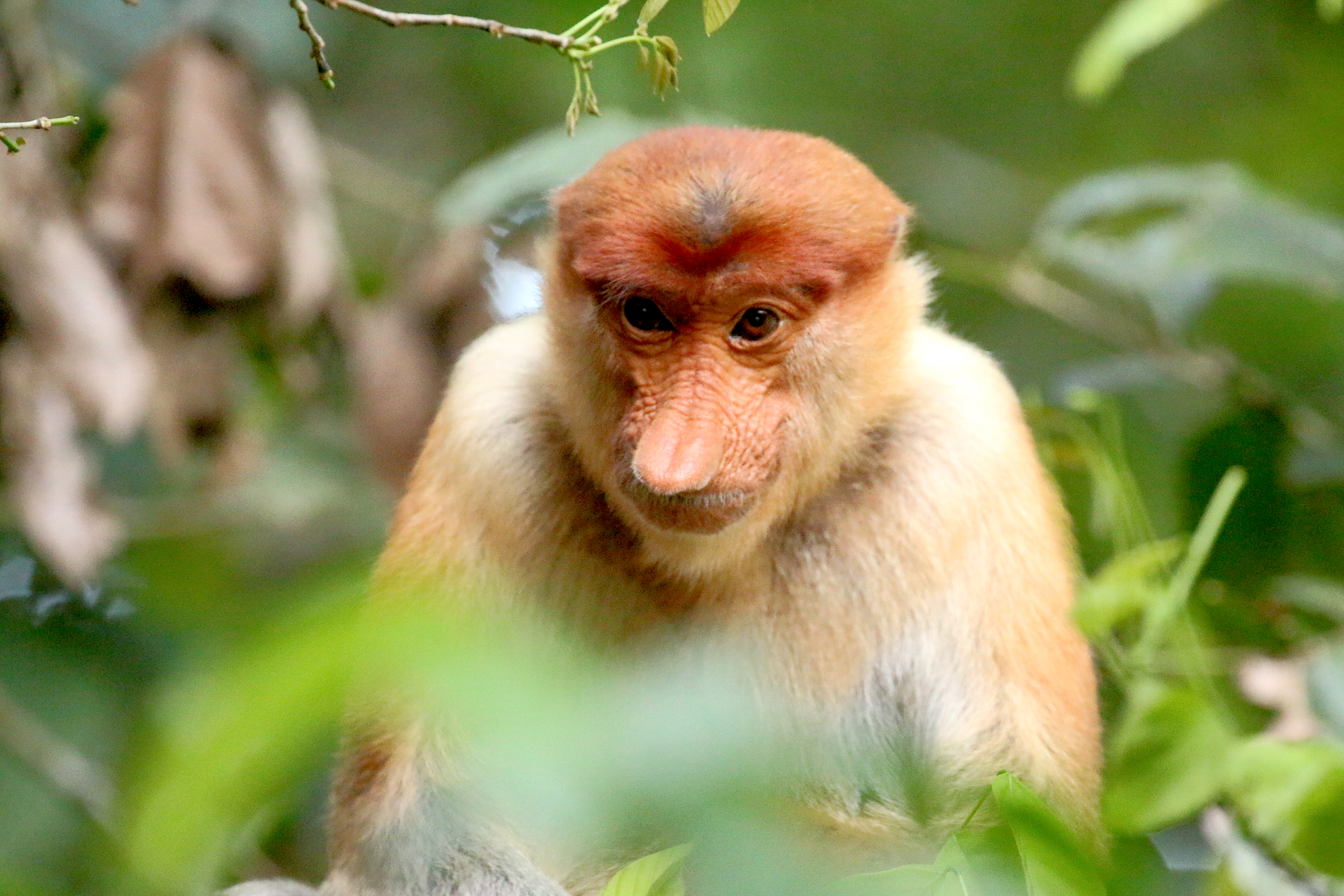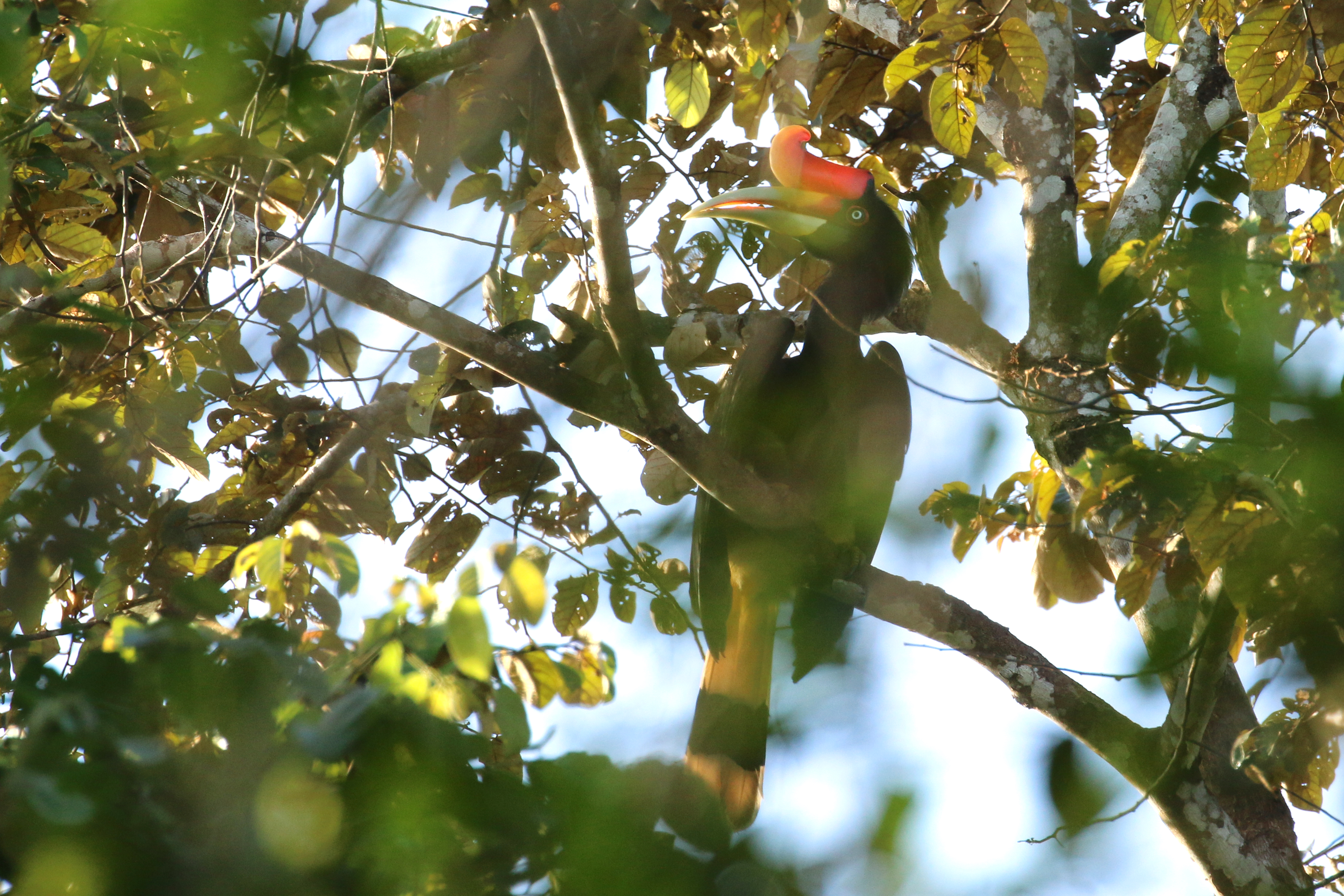WWF’s Kelley Ashford captured these wildlife photos within the world’s tallest rain forest during her Borneo Adventure with Natural Habitat Adventures. Her journey took her to the Kinabatangan River, the largest and longest river in the Malaysian state of Sabah, and the Sepilok Orangutan Rehabilitation Center, which is home to orphaned and injured orangutans that receive rehabilitation and care before being returned to the forest.
1. Blue-eared kingfisher
This blue-eared kingfisher was resting on a branch alongside the Kinabatangan River. I caught this shot during a riverboat wildlife excursion right before the colorful bird took off. The Kinabatangan Wildlife Sanctuary is home to one of the highest wildlife concentrations in Southeast Asia. WWF’s Corridor of Life project aims to establish a balance between the growing demands of private land development, the local community, and the need to protect its unique wildlife.
2. Long-tailed macaques
This family of long-tailed macaques was sitting together in a tree alongside the Kinabatangan River as our riverboat passed by. The adults seemed to pay us no mind as they went about grooming each other, but this tiny baby was very interested in our boat and didn’t take his eyes off of us. The Kinabatangan Sanctuary, where these macaques live, is critical habitat for species threatened by habitat loss through extensive development in the region. WWF works here to maintain wildlife corridors and establish balance between the local community needs and the need to protect this area’s wildlife.
3. Orangutans & Rehabilitation
Sepilok Orangutan Rehabilitation Center cares for orphaned and injured orangutans, many of which have been seized from illegal captivity. Staff help them learn basic survival skills and eventually transition them to living a semi-wild existence in the surrounding protected rain forest. I was walking on the elevated pathway that leads through the park when this male orangutan came down from the trees and decided to walk along the pathway.
4. Orangutan Reintroduction
This mother orangutan is one of the rehabilitated orangutans in the protected forest surrounding the Sepilok Orangutan Rehabilitation Center. Her baby was born wild, after her reintroduction to the forest. Once released into the forest, these orangutans are free to do as they please, but are still offered fruit on a designated platform each day to supplement their diet. This day, this mother chose to bring her young baby to get fruit together.
5. Orangutans in motion
A mother and baby orangutan swinging from improvised “vines” put up in the rain forest surrounding Sepilok Orangutan Rehabilitation Center to make travel through the forest easier for the resident orangutans. Orangutans are the only big apes that reside primarily in the tree canopy. Sepilok focuses on rehabilitating orphaned or injured orangutans in Sabah, Borneo.
6. Proboscis monkeys
While cruising along the Kinabatangan River’s many mangrove-lined tributaries, we occasionally came across groups of proboscis monkeys sitting in the trees. Most of the time, the monkeys would appear very aware of our presence. They would keep an eye on us as we passed by, and if it looked like we were getting too close, they would choose to move to a different tree. This photograph was taken during a slight rain shower. If you look closely, you can see the rain falling around the monkeys and water droplets glistening on their hair.
7. Proboscis monkey noses
Proboscis monkeys are known for their unusually large noses. This is a female proboscis monkey along the Kinabatangan River. One can tell from her smaller size of nose. Some males have noses exceeding 4 inches in length, hanging below their mouth. WWF works in the Kinabatangan River region to protect wildlife corridor areas, given the land surrounding this conservation area is largely developed with palm oil plantations.
8. Rhinoceros hornbill
A female rhinoceros hornbill sitting in a tree alongside the Kinabatangan River. These large birds are found throughout Borneo but are still near threatened. This female was striking to see through the tree leaves because of her piercing white eyes. Male rhinoceros hornbills have red eyes.
9. Crested serpent eagle
The Kinabatangan River is the longest river in Sabah, Borneo, and provides a lifeline for the abundance of life inhabiting its rich ecosystem. This crested serpent eagle was perched alongside the river during a morning riverboat cruise up the Kinabatangan and Menanggul rivers. WWF works in the Kinabatangan River region to protect wildlife corridor areas, given the land surrounding this conservation area is largely developed with palm oil plantations.

































